Components are an important component of electronic products. The quality of electronic components has a direct impact on the reliability of a final product. The handling of certain types of electronic products at every point in the supply chain has a great impact on their ability to perform as expected. Unfortunately, we've found that the mishandling of a lot of these parts can lead to serious oxidation to the point where the component can be unusable. Since we're often consigned parts, this can easily happen to parts that are sent to us from customers. When this happens, it's a significant waste because, oftentimes, the parts cannot be used. Even if they are used, the reliability cannot be guaranteed and, as often is the case, they may not even make it through SMT. It's a less serious problem for high volume components, but it's a huge issue for small lot, high value components. Therefore, it's important to take proper care in handling these. That's the topic we'll explore today.
1. Storage requirements
The first step in proper handling is proper storage when not being actively used. These types of components should either be stored in
- in the vacuum packaging bag with desiccant storage (generally silica or some derivative) or
- stored in a drying chamber (humidity <10%rh) [pictured below]
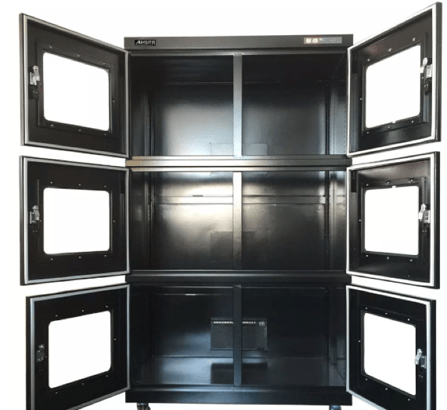
If no dry storage cabinets are available, then a minimum of requirements should be observed in the storage area:
- The warehouse must have basic temperature and humidity control at a temperature: 23℃ (±3℃) and a humidity: 30%~40%rh
- The rack must be grounded, control the static electricity
- If the package has been opened, it needs to be vacuum sealed and have a tracking card to verify when it was sealed. Temperature of the drying cabinet : 23℃ (±3℃), Humidity: <10%rh
The SMT factory should also observe these requirements for transportation and storage of humidity-sensitive components in their workshop.
2. usAge requirements
Opening the shipping box must be done carefully in order only to cut the tape and not damage the components inside. Once the package is opened, the contents must checked using the humidity sensitive card that should be contained inside. This needs to be in the normal range. If the dot is blue, it generally signifies normal. In the red ranges means its been in a damp environment. This is the first step in making sure the parts are ready for use.
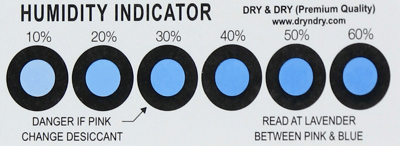 |
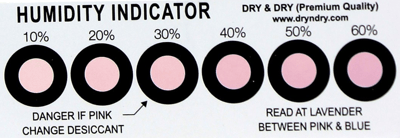 |
| Within Normal Range | High Humidity Experienced |
If the production process is interrupted and the components must be exposed for more than 5 hours, then the humidity sensitive components must be sent back to dry storage until production can continue. If the components are opened at room temperature in an environment of 10% RH, then they can be used again within 12 hours. If they are exposed for longer, they can be put into a 60℃ oven for 4 hours to be prepared for placement. Below are some guidelines for drying these components if they have been exposed to limited moisture.
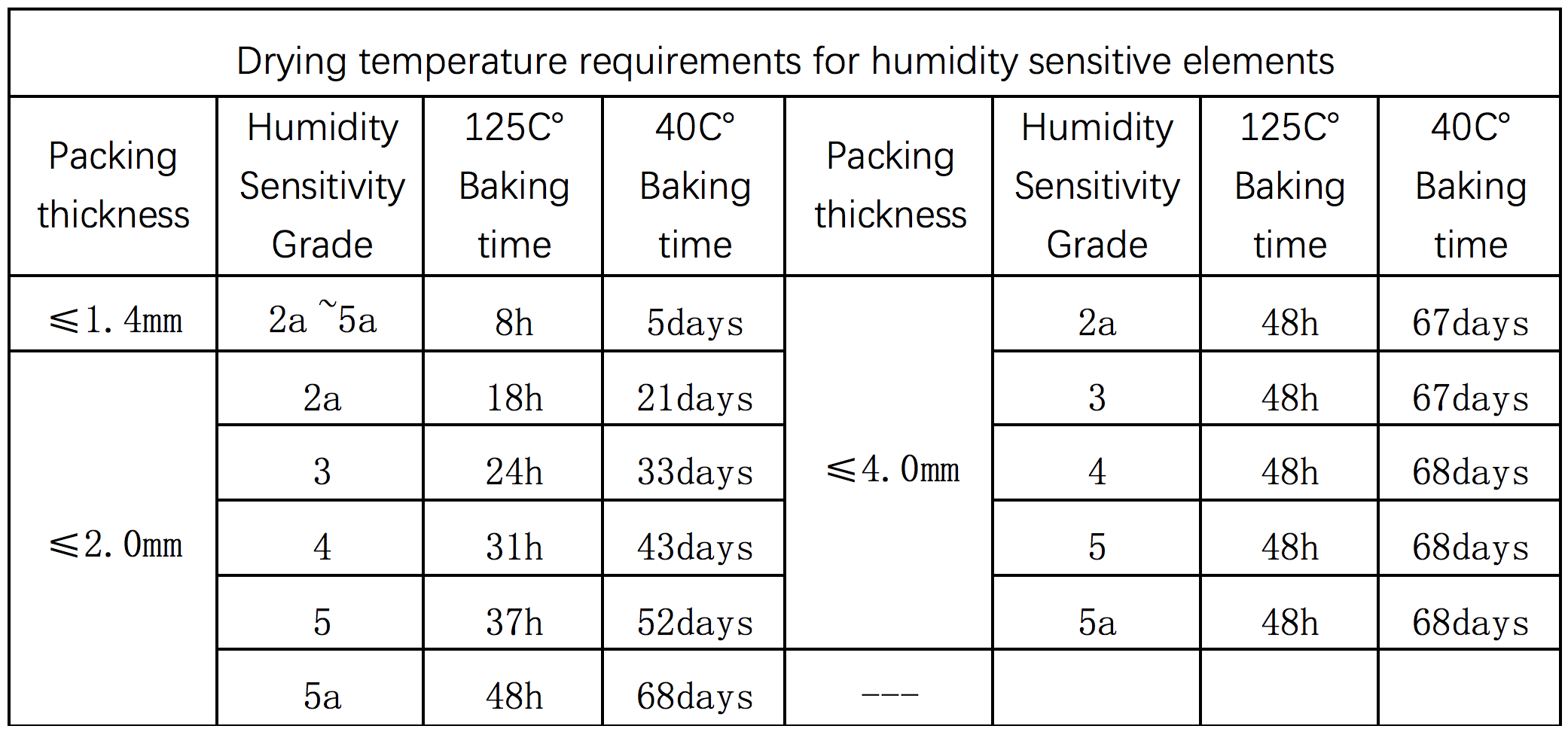
As is is the case with all electronics, assembly, welding/soldering, repairs, and other operations should be done in strict accordance with ESD guidelines so as to not damage the components with static discharge. In addition, it's recommended that the final assembled board be tested bare and in it's packaging before using an ion spray to eliminate excess static charge.
3. [Reference] humidity-sensitive Components Workshop service life requirements (MSD: humidity-sensitive components)
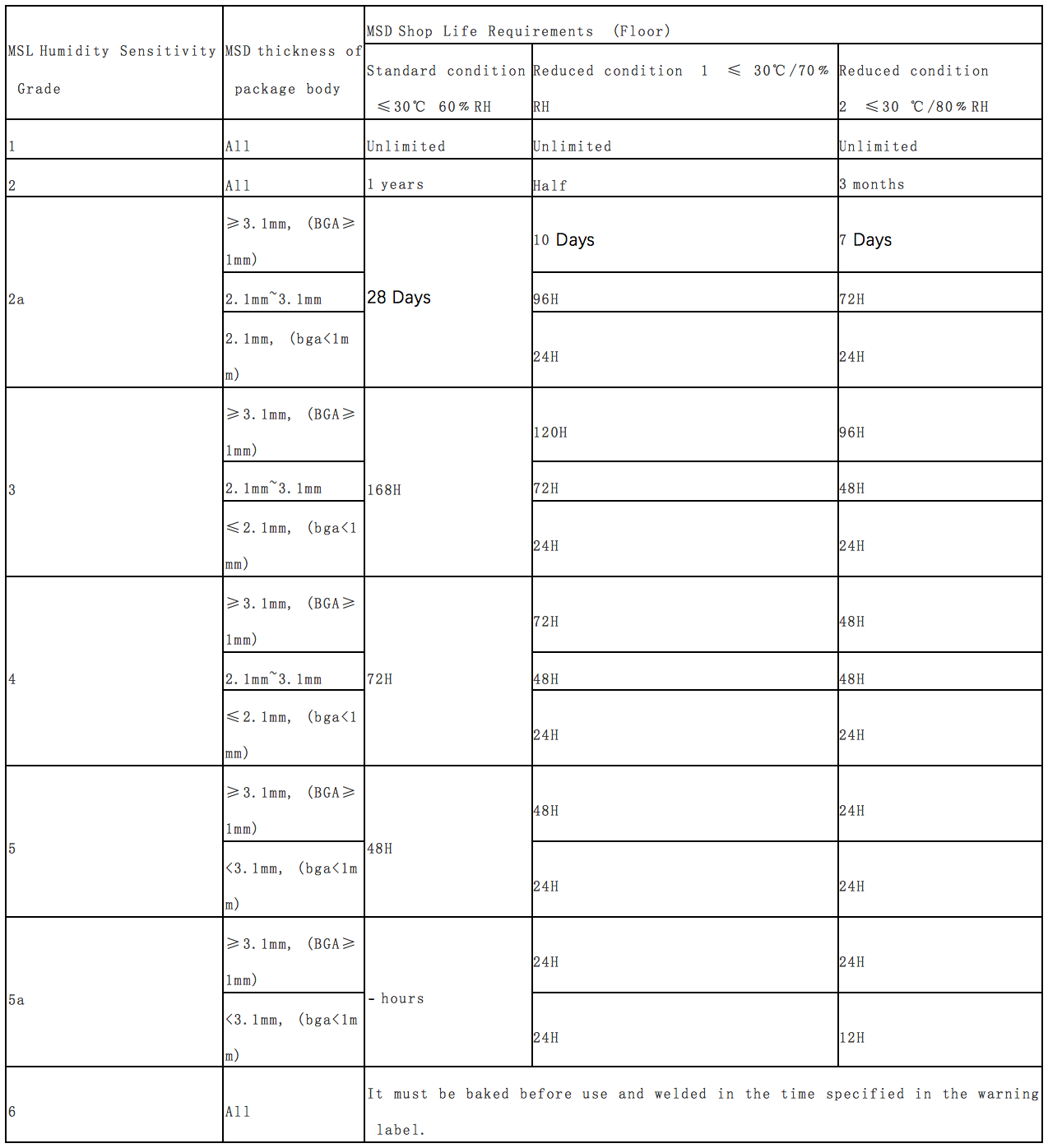
Attached: Humidity sensitive grade 2-5a of humidity sensitive components and warning indications
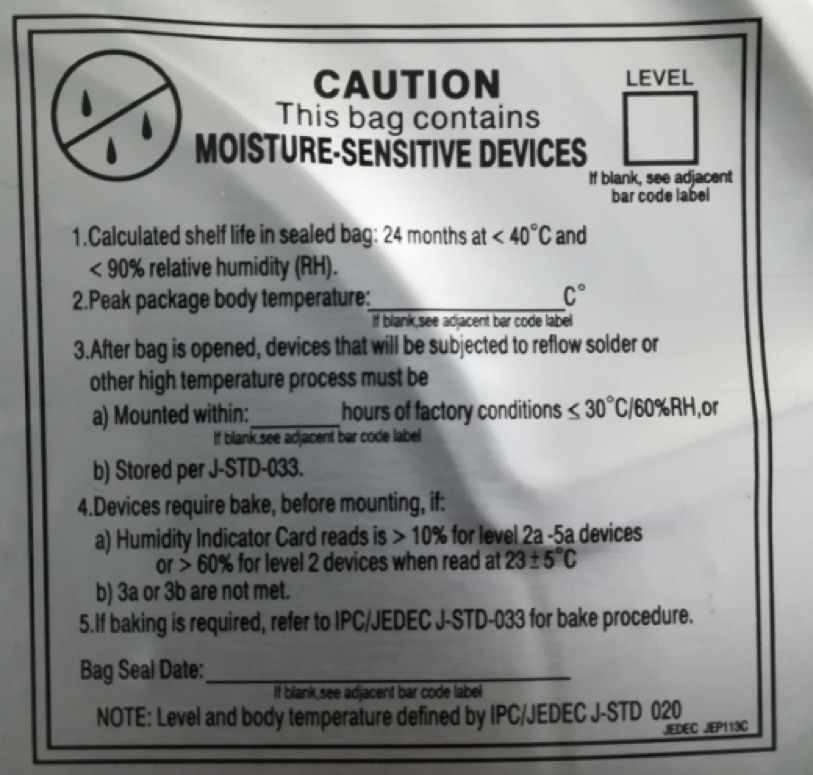
Humidity sensitive grade 2-5a -- Example Advisory Label for Components
4. How Does NexPCB Handle Your Components
When components are ordered through NexPCB, our supply chain ensures that sensitive components are handled correctly throughout their storage, handling, and shipment. Once at NexPCB, we store all humidity sensitive components using proper precautions (as outlined above). We also require that all SMT facilities that service our customer products also adhere to proper handling guidelines.
If components are consigned to us, then it is the responsibility of the customer to ensure that the components are handled properly between their supplier and our stock room. Once they arrive here, the components will endure an IQC process to confirm they have not been subjected to any undue stress, moisture, or other factors that could make them unsuitable for assembly.
If you have a project that has sensitive components that you'd like us to help make a reality, please contact us or submit a project request! We're always happy to provide stellar service for your electronic project needs!
Posted by Liang Guo

Liang is a skillful Electronics Engineer with an ability to solder almost anything. By anything, we mean 15+ year old shattered HDD Circuitry to retro gaming consoles .
